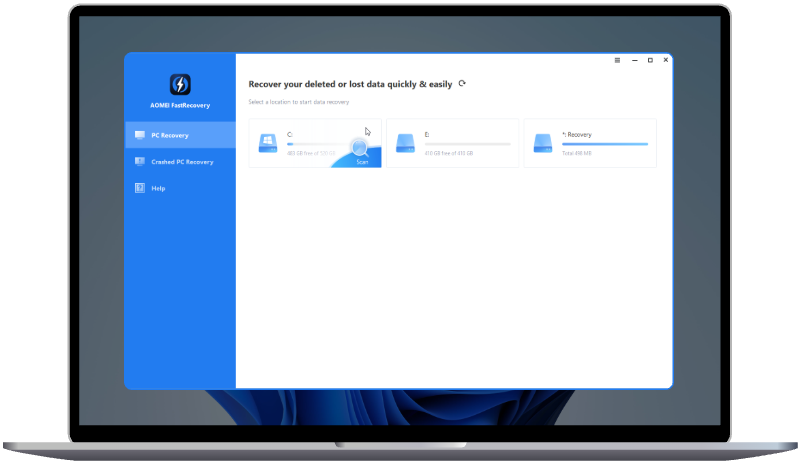Easy Guide: Format SD Card for Raspberry Pi
Explore step-by-step instructions to format SD cards for Raspberry Pi, ensuring compatibility and optimal performance.
In the realm of Raspberry Pi tinkering, ensuring your SD card is correctly formatted is paramount to seamless functionality. Raspberry Pi enthusiasts often encounter challenges with SD card formatting, hindering their projects' progress. Fear not! We delve into the nuances of Raspberry Pi SD card format, offering comprehensive insights, troubleshooting tips, and optimal solutions.
Understanding Raspberry Pi SD Card Format
Before diving into the specifics, let's grasp the significance of Raspberry Pi SD card format and its pivotal role in device operation. Essentially, the SD card serves as Raspberry Pi's primary storage medium, housing the operating system, applications, and data crucial for its functionality.
The Significance of Proper SD Card Format
An improperly formatted SD card can lead to system errors, performance degradation, and data corruption, impeding Raspberry Pi's overall efficacy. Understanding the nuances of SD card format is essential for seamless Raspberry Pi operation.
Common Issues with Raspberry Pi SD Card Format
Despite its simplicity, SD card formatting can pose challenges for Raspberry Pi enthusiasts. Here are prevalent issues associated with Raspberry Pi SD card format:
Incompatibility with Raspberry Pi
Certain SD card formats may not be compatible with Raspberry Pi, resulting in boot failures or system errors.
Data Corruption and File System Errors
Improper handling or formatting procedures can lead to data corruption and file system errors, jeopardizing critical data stored on the SD card.
Partitioning Errors
Incorrect partitioning schemes or misaligned partitions can hinder Raspberry Pi's ability to access data effectively, leading to operational inefficiencies.
Solutions for Optimal Raspberry Pi SD Card Format
To alleviate Raspberry Pi SD card format woes, consider implementing the following solutions:
1. Choose the Right SD Card
Select an SD card compatible with Raspberry Pi specifications, ensuring optimal performance and reliability.
2. Format Using Recommended Tools
Utilize reputable SD card formatting tools like SD Formatter or Raspberry Pi Imager for seamless and error-free formatting.
3. Verify File System Compatibility
Ensure the SD card's file system (e.g., FAT32, exFAT) is compatible with Raspberry Pi's operating system to prevent compatibility issues.
4. Check for Physical Damage
Inspect the SD card for physical damage or wear, as damaged cards may exhibit formatting errors or data corruption.
5. Update Firmware and Drivers
Regularly update Raspberry Pi firmware and drivers to maintain compatibility with modern SD card formats and optimize performance.
Recommendation: AOMEI Partition Assistant Professional
AOMEI Partition Assistant Professional emerges as a formidable tool for managing and optimizing SD card partitions. With its intuitive interface and robust features, AOMEI Partition Assistant Professional simplifies SD card formatting, partition resizing, and data management tasks.
Key Features of AOMEI Partition Assistant Professional:
- Partition Management: Effortlessly create, delete, resize, and format partitions with intuitive tools.
- Data Migration: Seamlessly transfer data between SD cards and storage devices without data loss.
- Partition Recovery: Recover lost or deleted partitions and data with advanced recovery algorithms.
- Secure Erase: Permanently erase sensitive data from SD cards to prevent unauthorized access.
To utilize AOMEI Partition Assistant Professional, download and install the software from the official website. Follow on-screen instructions to complete the installation process. Once installed, launch the application and explore its myriad features for comprehensive SD card management.
Essential Tech Terms Related to Raspberry Pi SD Card Format
Before concluding, let's elucidate five technical terms pertinent to Raspberry Pi SD card format:
- File System: The method by which data is organized and stored on an SD card, determining compatibility and performance.
- Partition: A logical division of storage space on the SD card, facilitating data organization and management.
- Firmware: Software embedded within the Raspberry Pi hardware, governing device operation and functionality.
- Boot Failure: The inability of Raspberry Pi to initialize or load the operating system from the SD card, often due to formatting or compatibility issues.
- Data Corruption: The degradation or alteration of data stored on the SD card, resulting from formatting errors or physical damage.
Tips for Successful Raspberry Pi SD Card Management
Before we bid adieu, here are three invaluable tips to streamline your Raspberry Pi SD card management:
- Regularly Backup Data: Safeguard critical data by creating regular backups of your Raspberry Pi SD card to prevent data loss.
- Invest in Quality SD Cards: Opt for high-quality, reputable SD cards to ensure reliability and longevity for your Raspberry Pi projects.
- Stay Informed: Stay abreast of the latest Raspberry Pi SD card formatting techniques and best practices to optimize performance and mitigate issues.
Conclusion
In conclusion, mastering Raspberry Pi SD card format is indispensable for seamless device operation and project success. By understanding common issues, implementing optimal solutions, and leveraging powerful tools like AOMEI Partition Assistant Professional, you can navigate SD card formatting challenges with confidence and efficiency.
FAQs (Frequently Asked Questions) about Raspberry Pi SD Card Format
Q: What is the recommended file system for formatting an SD card for Raspberry Pi?
A: The recommended file system for formatting an SD card for Raspberry Pi is FAT32. It is compatible with most operating systems and ensures seamless functionality with Raspberry Pi.
Q: How do I format an SD card for Raspberry Pi using SD Formatter?
A: To format an SD card for Raspberry Pi using SD Formatter, download and install the software on your computer. Insert the SD card into your computer's card reader and open SD Formatter. Select the SD card drive, choose the formatting options, and click "Format" to initiate the formatting process.
Q: Can I use an SD card formatted for Raspberry Pi on other devices?
A: Yes, you can use an SD card formatted for Raspberry Pi on other devices, but compatibility may vary depending on the file system and partitioning scheme used. It is recommended to backup any important data before using the SD card on different devices.
Q: What should I do if my Raspberry Pi does not recognize the formatted SD card?
A: If your Raspberry Pi does not recognize the formatted SD card, try reformatting the card using a different file system or partitioning scheme. Ensure that the SD card is properly inserted into the Raspberry Pi's card slot and that the device is powered on.
Q: Is it possible to recover data from a corrupted SD card used with Raspberry Pi?
A: Yes, it is possible to recover data from a corrupted SD card used with Raspberry Pi using data recovery software. Programs like AOMEI Partition Assistant Professional offer robust data recovery capabilities, allowing you to retrieve lost or deleted files from a corrupted SD card.

